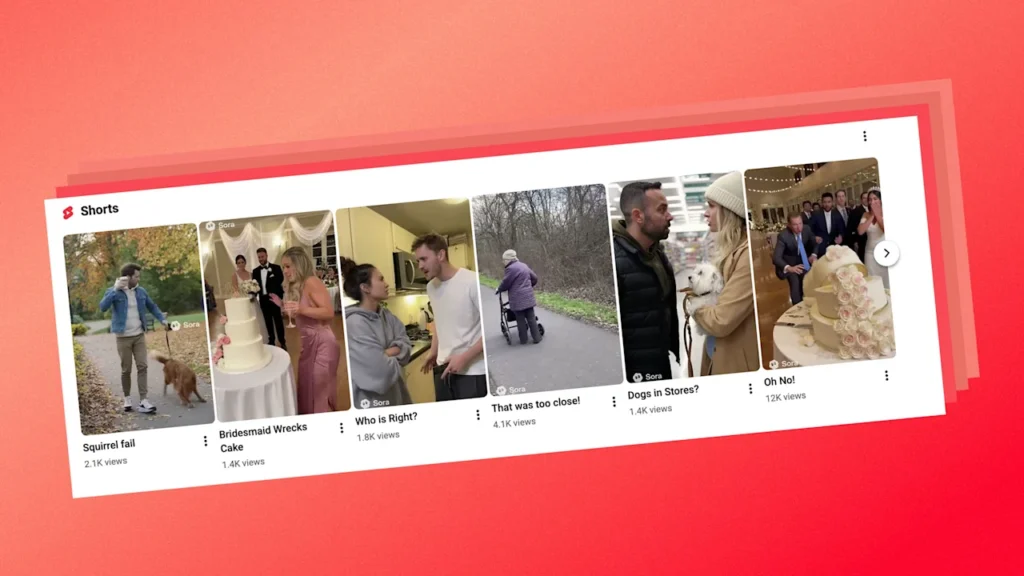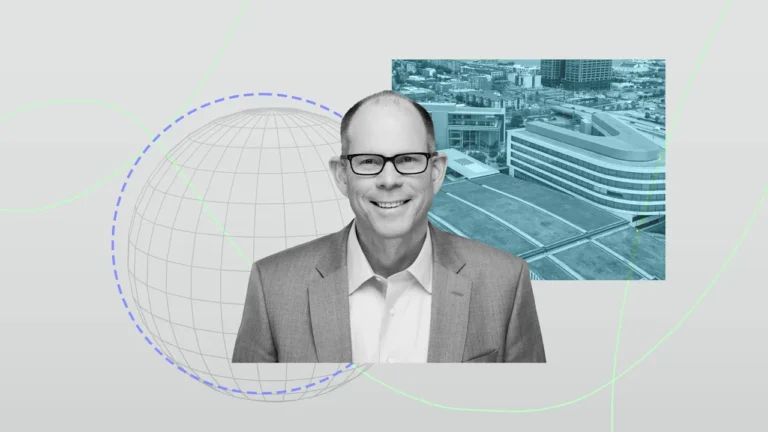
The kinds of videos that do well on YouTube Shorts are depressingly predictable: cute cats, heated arguments, crazy stunts, and plenty of good old-fashioned shots of people suffering low-key injuries.
The issue is that the real world produces only so many epic fails. And of the small number that do happen, even fewer are caught on video. Think of all the airplane passenger arguments and dropped wedding cakes that have gone untaped and unposted!
Enter Sora. OpenAI’s new video generator is hyperrealistic, and was clearly trained on billions of hours of short-form, vertical video. That makes it incredibly good at generating the kinds of short, grabby videos that pull in our attention and manipulate our emotions.
How do I know? I used Sora to create an entirely fake YouTube channel, populated with AI-generated versions of the kinds of videos I see on YouTube Shorts and TikTok all the time.
It took me about 30 minutes to build and it cost nothing. In less than a week, I have 21,400 views and counting. Let’s dig in.
Slop by the bucketful
Getting access to OpenAI’s Sora social network is hard. The platform launched as an invite-only app, and despite this hurdle quickly ballooned to more than 5 million active users. It’s growing even faster than ChatGPT.
Once you’re into Sora, though, using Sora 2 (the actual video generation model behind it) is extremely easy. You just type in the concept for a video, and Sora 2 writes the script, generates about 11 seconds of very realistic vertical video, and even adds synchronized audio.
The app struggles with beautiful, cinematic footage. In my early testing, Google’s rival Veo 3.1—which the tech behemoth launched to compete with Sora 2—is much better at that.
But where Sora 2 succeeds is in generating emotionally charged, short-form vertical videos. The model was likely built to drive the Sora social video network, and it shows.
I decided to test the appeal of Sora 2’s videos by moving them over to a traditional short-form video platform so they could compete in the real world against actual grabby, vertical clips.
To that end, I opened up Sora 2 and started typing in ideas for emotionally heated videos at random.
I quickly found that Sora 2 can work with either very detailed or very vague ideas. For one video, I used ChatGPT to write a detailed script for a complex scenario: a woman making a phone call in order to reconnect with her estranged mother.
Sora 2’s video nailed the task. From the subtle jump cuts to the swelling music (again, entirely AI-generated), it’s 11 seconds of surprisingly powerful micro-cinema.
For other videos, I went much simpler, letting Sora 2 run with my basic prompt. The text “two roommates have an argument, cellphone video” yielded this:
Entering “A man mistakenly knocks over a giant, beautiful wedding cake and people are shocked, realistic cellphone video” produced this gem, which is my favorite Sora video so far:
In total, I created eight videos. Each one took about 60 seconds to generate. Using Sora 2 within the Sora app is currently free. Basically, the system generates AI slop by the bucketful. Your job is simply to give the model direction and scoop up its output.
Cat fail arbitrage
You can post your AI slop directly to Sora itself. But I wasn’t content to stop there. Instead, I wanted to see how these videos would do in the real world. So I went over to YouTube and started uploading them to the platform’s YouTube Shorts section—basically YouTube’s clone of TikTok.
Rather than starting a channel entirely from scratch, I used a neglected one where I had previously posted videos of my dog, Lance. It had no traffic to speak of, and only a handful of videos, mostly uploaded to share with friends and family members.
The channel felt like an ideal blank slate; it wasn’t entirely new—I was worried that YouTube might flag and delete a fully new channel that started posting AI content right out of the gate—but hadn’t been developed at all. I could thus test what would happen if an existing YouTuber suddenly started posting nothing but Sora’s delightful slop.
I uploaded each of my new videos. Crucially, I didn’t want to deceive anyone, so I left Sora’s prominent watermarks in place. I also fully disclosed that the videos are AI generated, using YouTube’s Altered Content flag.
It doesn’t seem to have mattered. As I write this about a week later, my videos have already received 21,400 views. Poor little Lance’s best video had gotten only 2,600 views in the three years since I posted it. My top video from Sora—the one of the wedding cake falling—is at 12,000 views and counting.
Containment is impossible
AI-generated videos wouldn’t be so much of a threat to the traditional social media landscape if they stayed put. You could go to Sora for AI-generated fails, and TikTok or YouTube Shorts for the authentic ones.
My experiment proves that this containment is unrealistic. It’s shockingly easy to move videos from Sora to other vertical video platforms. And despite disclosures and watermarks, users seem to engage with the AI videos just as much as they would with real ones.
Sora the social network is also a pared-down experience when it comes to running the Sora 2 model. In its new API, OpenAI provides developers with direct access to Sora 2, including customizable video lengths and aspect ratios.
Videos generated through the API cost $0.10 per second. They have no distinguishable watermarks. It took me only about 20 minutes to code up an integration in Python, and I was creating fully automated AI slop for about $1 per video, at scale.
All that’s to say: YouTube, TikTok, and Instagram are about to be inundated with an unstoppable deluge of this stuff. YouTube tacitly admitted that when it introduced its Altered Content flag over a year ago.
At the time, AI video was so janky and unusable that YouTubers were confused as to why anyone would need to disclose AI content’s origins. Now we know.
For consumers, the message is clear. From here on out, trust nothing that you see on vertical video apps. That amazing bottle flip or delightfully juicy neighbor fight clip may well have emerged not from real life, but from the endless slop bucket of Sora 2.

